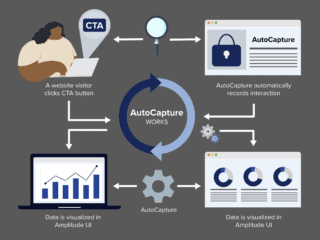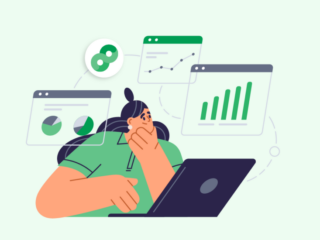 Feras has been busy sharing his thoughts on Practical eCommerce –we only allow him to share his realy great analytics thoughts and tips for marketers and ecommerce site owners on this blog 🙂 . The following are summaries of the articles he has published on the Practical eCommerce blog. To get their full goodness, be sure to check out the articles as well! Also, read to the bottom to find out how you can get a free copy of Practical Ecommerce’s EBook, 50 Great Ecommerce Ideas.
Feras has been busy sharing his thoughts on Practical eCommerce –we only allow him to share his realy great analytics thoughts and tips for marketers and ecommerce site owners on this blog 🙂 . The following are summaries of the articles he has published on the Practical eCommerce blog. To get their full goodness, be sure to check out the articles as well! Also, read to the bottom to find out how you can get a free copy of Practical Ecommerce’s EBook, 50 Great Ecommerce Ideas.
Holiday Analytics: 13 Tips to Prepare your Ecommerce Site
Click here to read the full article…
Holidays fast approaching? No worries! Feras lays out 13 analytics tips to highlight benefits by focusing on specific markers for the vacation translating into more sales and higher conversion rates. He breaks down the tips into three categories: Technology, People and Processes.
In technology, Feras shows you where you should tie the loose ends to have quality and reliable data, making sure the analytics tags are implemented and tested, to include remarketing and other important marketing tags while leveraging tag management solutions especially for mobile apps tracking. In processes, he makes a key point that holds true for the entire article, which is “the five Ps. Previous planning prevents poor performance.” Finally in People, he points out people make a difference. There is no way around it, organizations must commit resources and keep the resources up to speed on the analytics tools they depend on. And as Feras says, “An analytics plan is only as good as the people who implement it.”
3 Google Analytics Reports that Hinder Analysis
Click here to read the full article…
There is a bunch of analytics data for ecommerce businesses. Finding insights though can be a little tricky, but is totally worth it. In this article, Feras describes three standard Google Analytics reports that actually are misleading without some probing. 1. Click-through Rates and Costs per Click – A campaign may have awesome click-through-rates and cost-per-click, but what if it’s not converting? Bottom-line is conversion, don’t get hung up on the CTR and CPC; 2. Conversions from Paid Ads – Your paid ads may not be converting, but you don’t know the affect it has on the awareness of your product. It could take several touches for your audience to convert, paid ads could be at the top of the funnel, so don’t turn them off just yet!; 3. Multi-channel Conversion Funnels – You don’t see some of your channels in your multi-channel conversion reports. What if your social visitor called you? You wouldn’t see that in Google Analytics as a conversion. Don’t treat your offline and online channels separately.
3 Key Google Analytics Reports for Ecommerce Merchants
Click here to read the full article…
If you listen to Feras’ talks or read his articles, you think the guy is obsessed with something called “segmentation”. Well, in our business, ninjas know this truth: segment or die. The first point is segmentation by traffic channel (yes, this is still a major issue for many organizations); this consists of tracking how people are coming to your site and recognizing which channels are the money makers. By keeping track of those converting, you can assess what certain behaviors are likely to lead to better results. The second nifty tip is to segment the data by the day of the week. Segmenting by the days of the week, you will be able to see how conversion rates vary depending on the day and hours and then use those results to boost sales. Finally, the article points out that funnels are typically underutilized by many marketers, and Feras shares tips on gathering insights across the entire checkout funnel as well as creative funnel ideas such as: Add-to-Cart conversions, repeat buyers funnels and placements of add-to-carts.
Ecommerce Analytics for Multiple Devices, Channels
Click here to read the full article…
In this article, Feras provides clear reasoning for the use of tracking visitors across multiple devices and channels allowing for harnessing a level of complexity that traditional analytics approach do not capture. He compares data from desktop users versus mobile traffic of those consumers. He also shows how creating a primary key for each visitor is critically important in today’s analytics (and get ready for Google’s Universal Analytics). This primary key will allow for stitching data across channels and devices to better assess consumer behaviors and in the future develop models for more effective messaging and targeting.
5 Ecommerce Metrics You Should Be Tracking
Click here to read the full article…
Feras shares smart analytics techniques for tracking five user interactions that aren’t usually given attention to. The first is Product Categories; most people miss out on the aggregate view (e.g. men category, women category, etc.) and just report on top products. Next is tracking Product Comparison interactions, which allows customers to compare products as they would like, and thus allowing for tracking of which products were compared and which are getting no interest. Next, is Live Chat Tracking, to potentially identify correlation between visitors’ interests and products they end up buying. Fourth metric that is discussed is Shopping Cart Removes, (not just Adds), maybe it’s pricing, maybe it’s shipping cost, if you are not tracking Cart Removes; you won’t fully understand your funnel bottlenecks and drop-offs. And the final section has to be on, you guessed it, Segmentation! Know Your User segments and please don’t report and do analysis on aggregates.
Practical Ecommerce: 50 Great Ecommerce Ideas
Now that we’ve covered some super useful practical tips for ecommerce marketing managers, we will leave you off with another resource, here are awesome ecommerce ideas and tips from experts, sign up for the PEC newsletter here and receive a free copy of the eBook 50 Great Ecommerce Ideas!

















